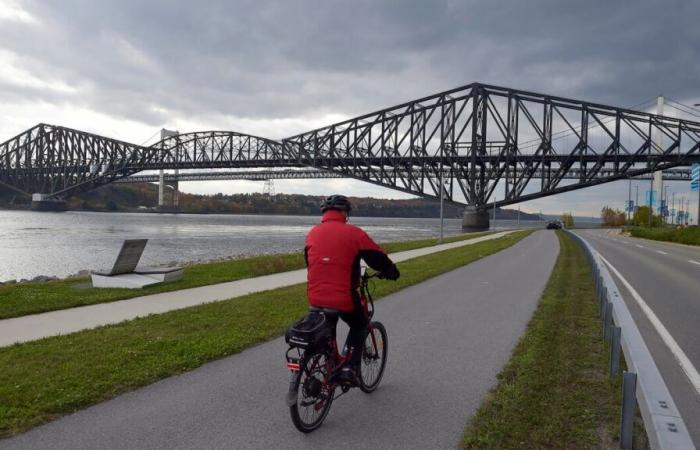The new deck that the Quebec Ministry of Transport wants to install on the Quebec Bridge is too heavy and risks “leading to cracks in the steel” and “reducing the end of life of the structure”.
• Also read: Guilbault agrees that trucks could “theoretically” use the Quebec bridge
• Also read: The Quebec Bridge has the carrying capacity to accommodate the transport of goods
These warnings were sent on September 12 by the federal government through the Director General, Large Bridges and Projects of the Ministry of Housing, Infrastructure and Communities Canada (LICC).
In a letter that Le Journal obtained, and which was addressed to the director general of the Department of Major Road Projects for the Quebec Metropolitan Region at the Ministry of Transport (MTQ), the federal government issues several warnings on the work planned to be done the MTQ.
25 to 30% heavier
The latter plans to replace the deck of the century-old structure, the track on which cars travel. But LICC “has learned that the proposed deck would be 25 to 30 percent heavier than the existing deck,” the letter said.
This poses a series of problems, in the context where the federal government plans to carry out rehabilitation work on the bridge and that scaffolding will also have to be installed during the replacement of the deck, which will increase the load, advises LICC.
“With the increase in the weight of the road deck as proposed, the regular addition of scaffolding over a long period (75 years) as well as the known corrosion in the structure, this will expose the structure to cycles of overload in continuity and quasi-permanent, which could lead to cracks in several components and thus reduce the end of life of the structure, a situation that Canada absolutely wants to avoid,” concludes the missive.
The federal government also emphasizes that several “unknowns” remain regarding the bearing capacity of the bridge. For example, the bearing capacity studies date from 2013 to 2016 and do not take into account recent damage to certain parts and the bridge piers. They also do not consider the weight of the ice.
“Thus, the loads imposed by the proposed (heavier) road deck and the scaffolding are at the limit of the load-bearing capacity of several components.”
Reduce traffic
During the work to replace the deck, for the load to be “acceptable”, “it would be necessary to limit scaffolding as well as reduce road traffic by 50% (this would prohibit the passage of buses)”, warns Ottawa.
The engineers therefore recommend asking the MTQ “to change its road deck replacement design for a deck with a weight equal to or less than the weight of the existing road deck.”
On Wednesday, the Minister of Transport of Quebec, Geneviève Guilbault, deplored that the federal minister Jean-Yves Duclos claims that we can use the Quebec bridge to transport heavy trucks. “He should read this letter,” she said, without making it public.
A few days ago, the new federal company that owns the bridge maintained that the current carrying capacity of the bridge was adequate at present. But she did not comment on the situation of the bridge with its new deck.
In a recent response sent to the Journal, the MTQ had nevertheless affirmed that the new deck could potentially accommodate the weight of heavy transport, by modifying the configuration of the tracks.






